AO Edited
Crater Rings
Two geologically young and nearly circular volcanic subsidence craters, each about a half-mile in diameter, abruptly break the nearly featureless Snake River Plain.
A volcanic subsidence crater (also called a pit crater or collapse crater) is formed when subsurface magma, supporting the rock overhead, drains away for whatever reason. The unsupported rock “ceiling” over the void left by the draining magma then collapses. (Much the same mechanism accounts for the formation of summit caldera craters, but those are typically at a larger scale.)
A subsidence crater can be distinguished from other craters, such as maars (e.g., Soda Lakes in Nevada), or impact craters, because they have no built-up rim formed by debris ejected out of the crater. They also typically have flat floors, reflecting the former presence of a lava lake.
Crater Rings are two collapse craters on a low, broad shield volcano that is thought to be geologically young (less than about two million years old). The east crater is about half a mile across and 300 feet deep, while the west one is slightly smaller and shallower (approximately 200 feet deep).
This shield volcano lies out in the Snake River Plain north of Mountain Home, Idaho, an area that has seen abundant volcanic activity in the recent geologic past. Despite the ubiquitous volcanism, however, subsidence craters like this are rare in these volcanic fields.
Know Before You Go
The Crater Rings are just off Interstate 84 north of Mountain Home, Idaho. Take Old US-30 (Old Oregon Trail Highway) 9.1 miles north from its intersection with Idaho State Route 51 (American Legion Boulevard) in downtown Mountain Home to a junction (at about 43.21878 N, 115.82268 W) with Cinder Butte Road. Turn left here and follow Cinder Butte Road (which is graded) 1.8 miles to a junction (at about 43.21506 N, 115.85748 W) with a primitive road on the left. Turn left here; the Crater Rings are in the low rise which forms the skyline. Go about 1.4 miles and park. This road will need high clearance but 4wd will probably not be necessary in dry weather. Jeep roads go around the craters, but can also be hiked.
The ground cover is all low grass and shrubs. A common component is cheat grass, a non-native species that, when dry, has annoying seeds that embed in clothing (such as socks) and also in pets' coats. It's also extremely flammable and has made wildfires both more common and more catastrophic in recent years. Be very careful with fire; in particular, don't park on dry grass as it is easily ignited by a hot catalytic converter.

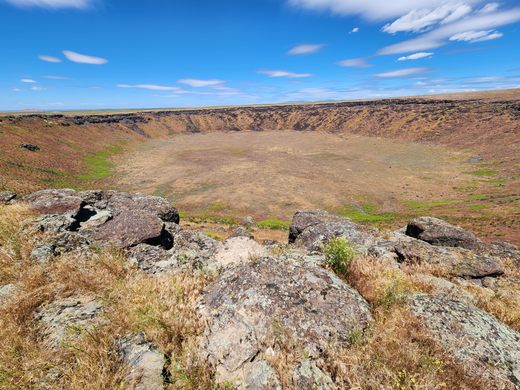
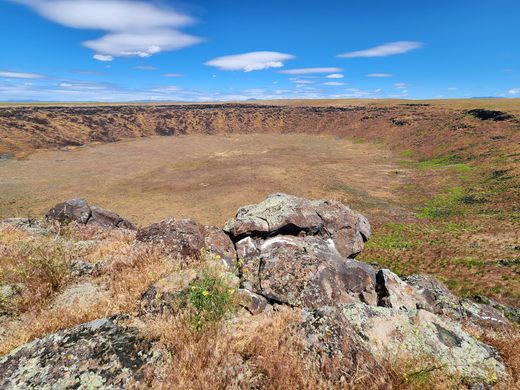
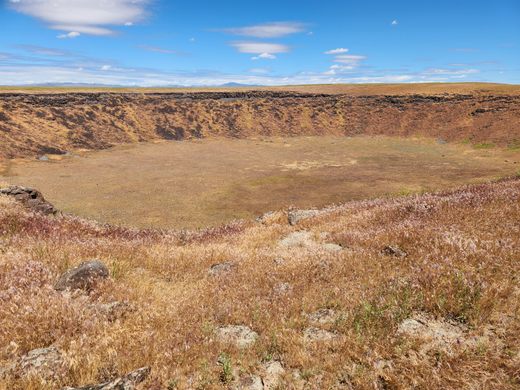
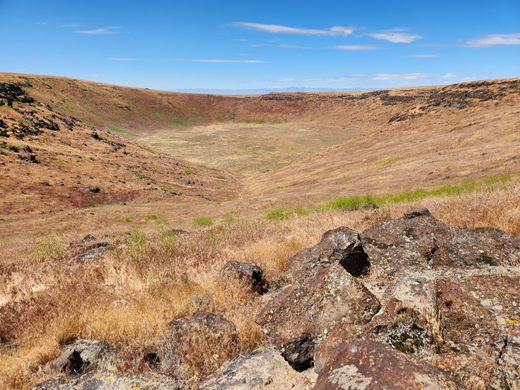



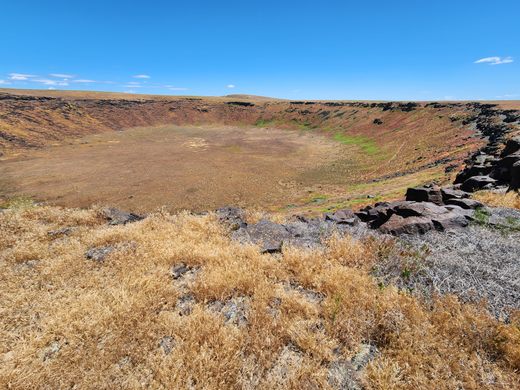
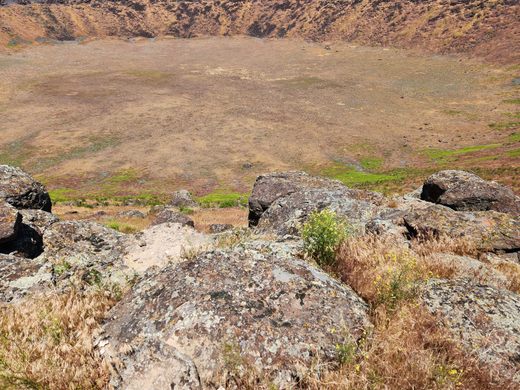
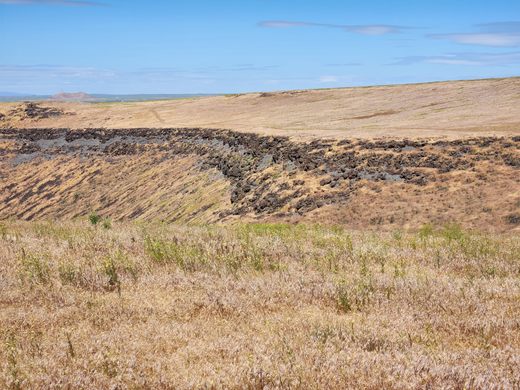


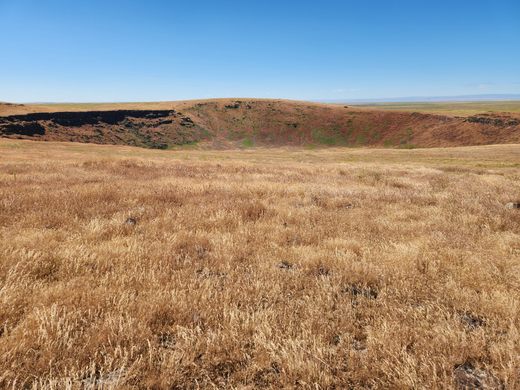
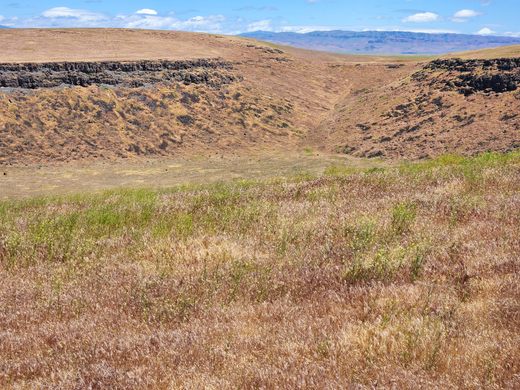
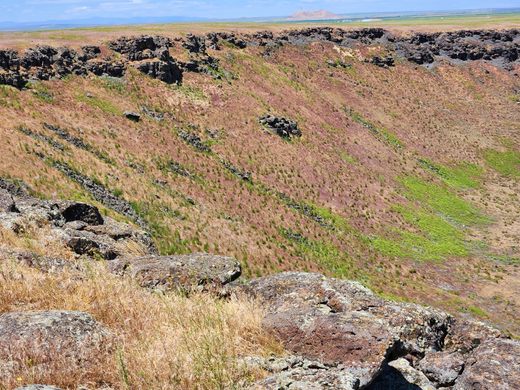



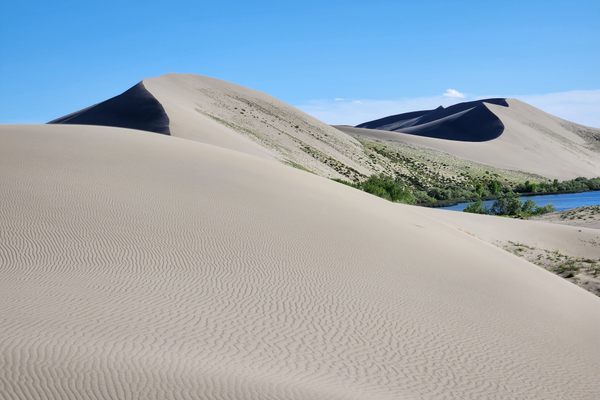
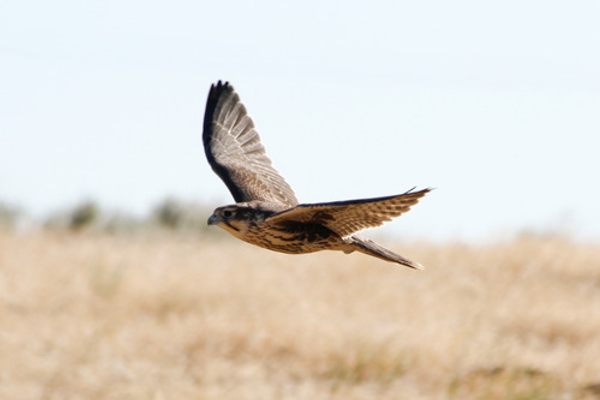






Follow us on Twitter to get the latest on the world's hidden wonders.
Like us on Facebook to get the latest on the world's hidden wonders.
Follow us on Twitter Like us on Facebook